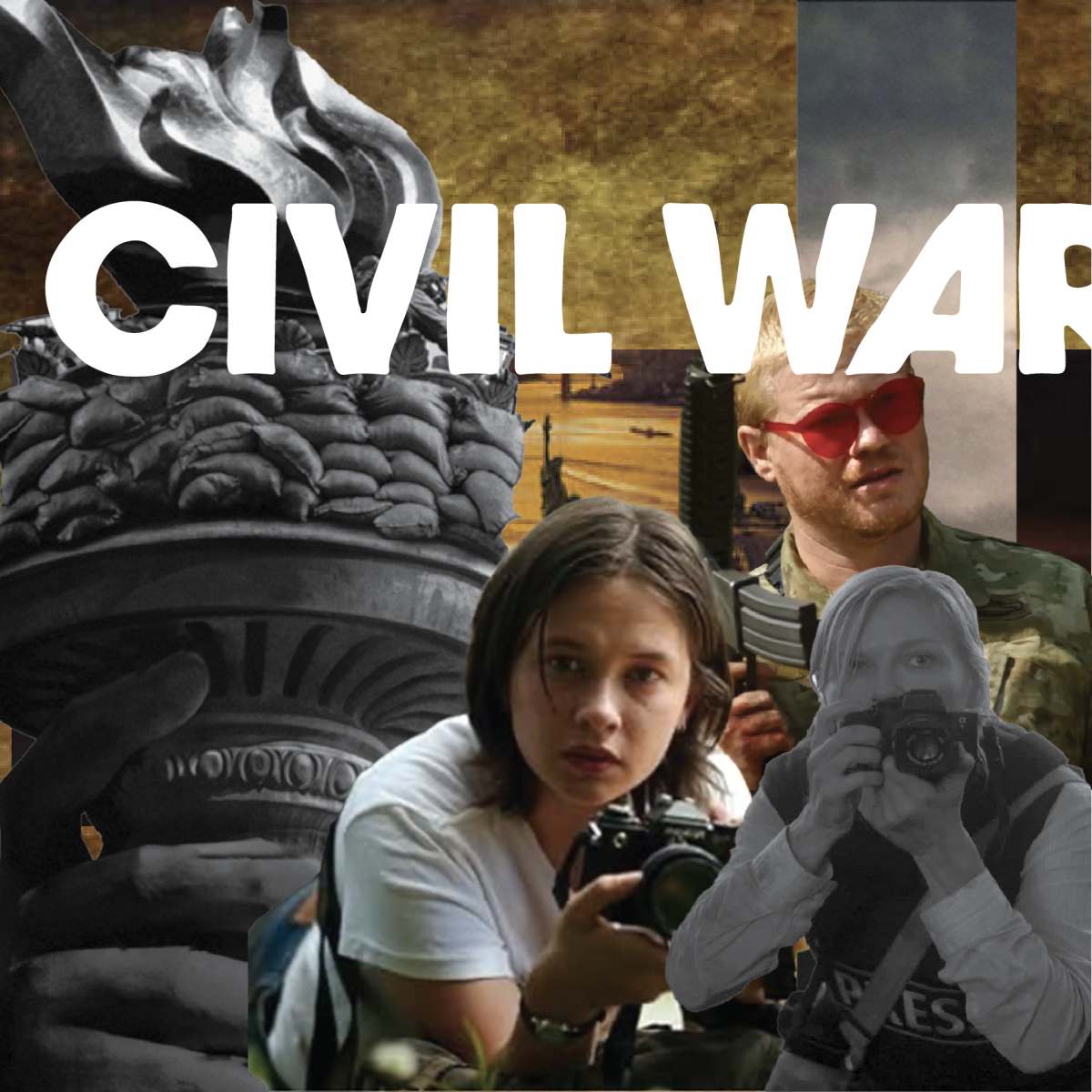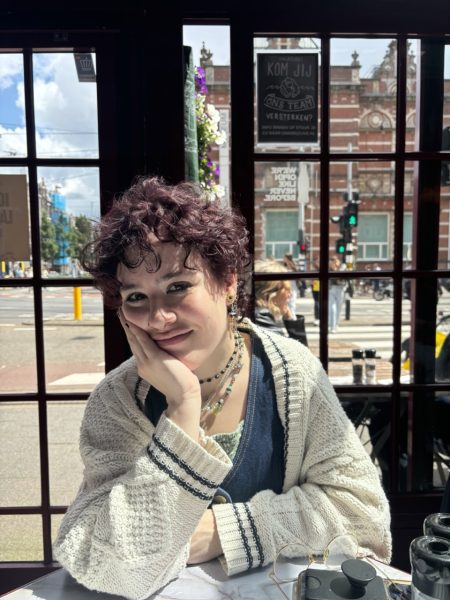There’s a scene early in A24’s newest movie, Alex Garland’s “Civil War,” that tells the audience everything they need to know about the conflict raging in the film’s near-future United States.
In that scene, the first major action sequence of “Civil War,” a water protest has erupted in New York City. On one side, protesters clutch empty water receptacles and wave handmade signs. On the other, riot gear-clad police officers strike out at the growing mass of angry citizens. As violence mounts, Kirsten Dunst, Wagner Moura and Cailee Spaeney, the reporters “Civil War” follows, throw themselves into the fray, documenting the events without any regard for their safety. Dunst’s veteran photojournalist, Lee, snaps pictures mere inches from flying fists. Spaeney’s Jessie takes a blow from a baseball bat. When an explosion turns the protest into a massacre, it’s only luck and quick thinking that saves the reporters from death.
Garland, ever savvy when it comes to symbolism, leaves the scene on a vivid image: an empty bottle of bleach rolling away from the fiery carnage, a destructive chemical container intended to hold the thing that makes life possible. In “Civil War,” the U.S. has become that bottle of bleach, and its people the water trapped inside of it.
With the exception of the film’s opening sequence, which features Nick Offerman’s fascist president delivering a State of the Union address, “Civil War” doesn’t provide many more specific details about the nation’s collapse. That isn’t the point. The film’s title is evocative because of the political weight the term “civil war” has in the U.S., but civil war isn’t an experience exclusive to U.S. history. The movie may as well be called “War” for how much it has to do with the Confederacy or a future national schism that resurrects it.
This movie is about journalists documenting warfare, and how stupid, brave, important and exhilarating it is to do so. It’s not apolitical. It’s objective.
The film follows the four journalists on their trek from New York City to Washington, D.C., where the secessionist Western Forces are seeking to apprehend Offerman’s president.
Dunst’s character, Lee, is a renowned war photographer with a tough exterior and a hardy dose of PTSD. Moura’s reporter, Joel, is a charisma machine who self-medicates with drugs, alcohol and other people. Stephen McKinley Henderson shines as Sammy, an older editor joining his younger colleagues out of protectiveness as much as a sense of duty. Spaeney’s Jessie is a young photographer with aspirations of becoming her hero, Lee, and it’s through Jessie’s eyes that the audience is introduced to what it means to document warfare.
Each of the core four performances are impeccably played. Dunst is a standout, believably communicating her jaded pain and seasoned ability through tired eyes and capable hands. However, it’s Spaeney that impresses coming out of the film. Dunst is a proven talent while Spaeney, much like Jessie, is following her example. Between “Civil War” and last year’s starring turn in Sofia Coppola’s “Priscilla,” with whom Kirsten Dunst once rocketed to stardom, Spaeney is proving herself as an up-and-coming movie star. She’s revelatory in “Civil War.”
The film was shot in chronological order, which works in its favor. As the protagonists roadtrip through hell, their faces get grubbier, their shirts get stained and their hearts grow heavier. Instead of a singular continuous narrative, Garland crafts an episodic experience. Each vignette is another opportunity to demonstrate a different perspective of warfare, and each is a learning experience for Jessie. A particular standout, and the most terrifying sequence in a truly harrowing movie, stars Jesse Plemons.
Plemons, married to Dunst in real life, is a master at ratcheting tension up to the nth degree. He employs that talent in “Civil War” to incredible effect. His anonymous and sadistic soldier wears cheeky red glasses with his military uniform, as though seeing the war through a prism of blood, and is the ultimate challenge for our journalists. How is it possible to objectively document the vicious and ambiguous, Garland asks his characters.
“Civil War” proves itself on the basis of how it answers that question alone.
Other stray bullets of the “Civil War” experience could include the beautiful cinematography Garland sprinkles into the ugliness of war. A shot of Dunst on top of a smoky balcony is already one of the most striking images this year. In another scene, a forest fire surrounds a car in a whirlwind of silent wonder. Helicopters soar over misty lakes and the Washington, D.C. skyline. A brief stop in a graffiti-strewn camp is filmed in wide shots with our journalists in the middle, as though finding a core of constancy in the middle of colorful chaos. One faction in this civil war is neon-themed, after all, with loud hair dye, eccentric nail polish and bright chalk serving as their calling cards.
The sound design is perhaps the most plainly impressive thing in the movie. Every gunshot feels like a punch, and every silence feels like an eternity. It’s realistic, immersive and terrifying moviemaking. When the characters are on the frontlines, the audience is too.
“Civil War” is a masterpiece in objective storytelling that’s hard to be objective about. Let’s not be. “Civil War” is wonderful. See it.
Rating: 5/5 Yosefs





Beth Mitchell • Apr 29, 2024 at 5:39 pm
⭐️⭐️⭐️⭐️⭐️